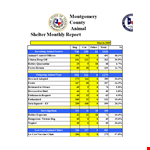Did you know that rabies is a deadly viral disease that affects both animals and humans? It is important to understand the risks associated with animal rabies and how to prevent exposure.
Animal rabies occurs when an infected animal, such as a raccoon, bat, or skunk, bites or scratches another animal or a person. This can lead to the transmission of the rabies virus, which can be fatal if not treated promptly.
To educate others about the dangers of rabies, consider using pamphlet templates specifically designed to provide information on this topic. These templates can help raise awareness about the risks of exposure and the importance of taking preventive measures.
One of the factors to consider when addressing rabies is the cost associated with prevention and treatment. Vaccinating animals, providing post-exposure prophylaxis, and conducting surveillance programs can result in expenses. However, it is crucial to weigh these costs against the potential impact and loss of lives that can occur if rabies is not effectively managed.
Preventing rabies requires a comprehensive approach that involves education, vaccination, responsible pet ownership, and reporting any suspicious animal behavior. By staying informed and taking appropriate precautions, we can work towards minimizing the total incidence of rabies cases in our communities.

